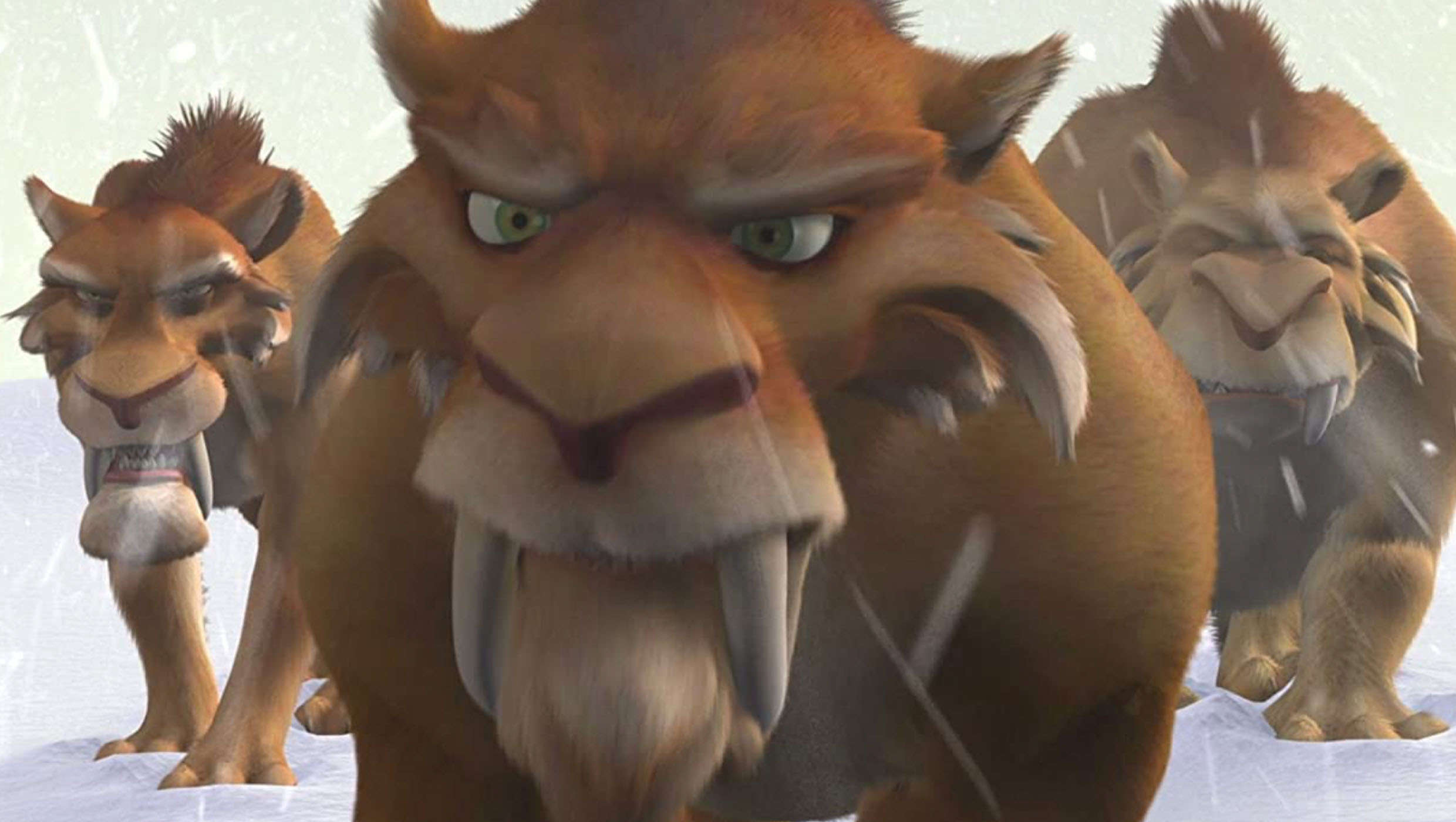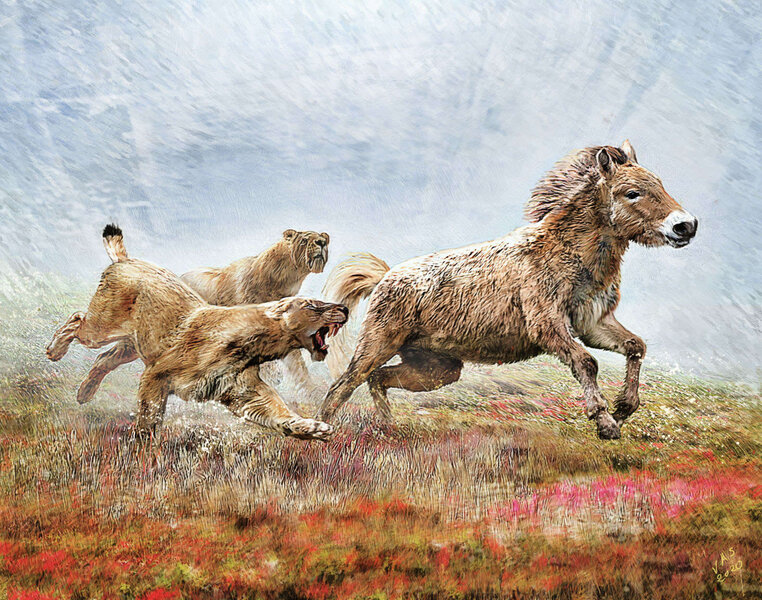Create a free profile to get unlimited access to exclusive videos, sweepstakes, and more!
Fear the reaper, because scimitar-tooth cats were death on four legs

With Halloween sneaking up on us, visions of the black-robed, scimitar-wielding Grim Reaper are everywhere from party stores to Family Guy, but none so scary as one predator that terrorized most of the planet around 50,000 years ago.
Teeth like the Reaper’s iconic scimitar made Homotherium latidens the embodiment of death rising out of the snows after Earth froze over and the dinosaurs were no more. This scimitar-tooth cat — basically a sabretooth on steroids — could easily take down other megafauna like giant ground sloths and mammoths by hunting them to exhaustion before sinking its enormous teeth into their flesh. Its jaws were so powerful it could just carry its meals elsewhere to feed. Now that the genome of Homotherium has been sequenced for the first time ever, it reveals which genes made them the apex predators they were.
“When analyzing the genome of Homotherium, we found that it was likely relatively more abundant than most of the large cat species alive today. The fossil record for Homotherium is relatively scarce, leading researchers to believe they were not very abundant. But the lack of fossils does not necessarily mean a lack of individuals. Instead the lifestyle of the Homotherium may have just not led to it occupying the areas well suited for fossil preservation,” University of Copenhagen postdoc Michael Westbury, who co-led a study recently published in Current Biology, told SYFY WIRE.
Homotherium was no kitty. Previous studies assumed it was highly divergent from any species of cat alive today, even lions and tigers and jaguars and other notoriously fearsome felines, and Westbury’s team also found it to be a distant sister lineage to extant cats. Another thing their genetic analyses revealed is that it diverged from other cats around 22.5 million years ago. Humans only diverged from gibbons about 17 million years ago.
"Homotherium is equally distantly related to all cat species of today. They shared a common ancestor with the ancestor of all living cats (before this ancestor gave rise to any of the species we see today)," said Westbury.
These monsters skulked around during the daytime with others in their packs, since they are thought to have been social creatures, until they seized the chance to chase prey at breakneck speed. They had excellent vision, meaning they could spot a moving meal from a distance and go for it. Even animals that were decent runners didn’t have much of a chance against the Grim Reaper bolting after them. Forget ground sloths.
It also appears that Homotherium had competition. The ancestors of lions, including the extinct cave lion, leopards and jaguars, as well as other prehistoric sabretooth cats, such as Smilodon, would all try to outrun it to catch a meal. Fossil evidence has shown that despite the pressure to beat out other carnivores, Homotherium succeeded enough to spread throughout most of the continents we know today until it went extinct after the last Ice Age.
Further analyzing Homotherium DNA, Westbury and his colleagues found that there was a significant difference between this beast and the furry things we make endless memes about. However, something unexpected that came out of genomic sequencing was that Homotherium were much more genetically diverse than any species of cat still alive, so it had enough subspecies that stalked in enough regions to make the world a dangerous place for many large herbivores. Any hybridization that might have happened from interbreeding with other cats still remains unknown. Westbury and his team did try to find evidence of hybrids.
"We looked into the genome to see if we could see any signs of hybridization," Westbury said. "However, we did not see this. Due to the very deep divergence of Homotherium from any living cat, even if they were to mate, it is highly doubtful that any offspring would have been viable."
A comparative genomics analysis was needed to find which genes separated the leader of the pack from the rest as the result of positive selection, or the process which gives an entire population of organisms genetic advantages. Analyzing DNA with this method involves comparing genes, sequence and regulatory regions in which RNA and other proteins bind and interact with each other to transcribe RNA (ribonucleic acid). RNA gives DNA directions on how to arrange amino acids into proteins. Some of the 31 genes that stood out in Homotherium were those associated with vision, socialization, endurance and diurnal behavior, which differs from many extant felines who are nocturnal hunters.
So if these cats were so fierce, why did they end up dying out while their distant relatives survived?
“It is hard to say, but perhaps the exact adaptations that made it perfectly suited to hunt large prey for millions of years, such as why it used the large teeth, or its high energy needs for endurance hunting suddenly left it at a disadvantage when a lot of the large megafauna went extinct at the end of the last Ice Age," Westbury said. "Extant species may have been more adaptable, or even luckier as they find themselves in Africa where a lot of large prey species remained but went extinct outside of Africa.”
Just be sure any Grim Reaper you see around this time of year doesn’t have enormous fangs. Bonus points to anyone who can excavate both song references in the title.



























